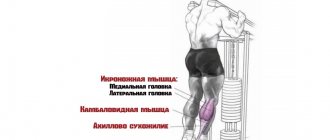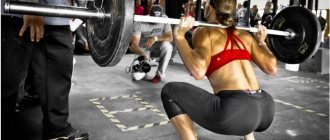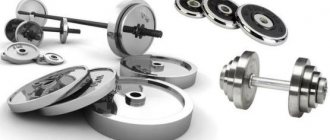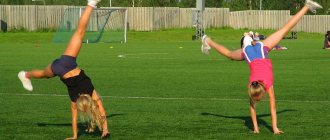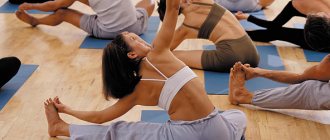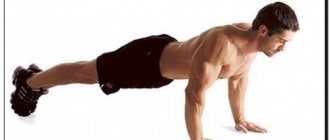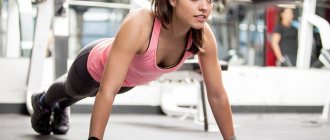Is it possible and necessary to listen to music during training and competitions: is it beneficial or harmful? What effect does it give?
Many people love to run to music. For example, I usually turn on my playlist from VKontakte, then Endomondo, which over the music speaks every kilometer about the pace of the last kilometer and go!
During my first half marathon as part of the “half” triathlon in St. Petersburg (details here), I was going to run as usual - with my favorite music in my ears, but the coach insisted that I run without headphones: “The pros will laugh at us.” Argument: if you run with headphones, you involuntarily close your mouth, which has a bad effect on the oxygen supply to the body.
As a result, I ran to the voices of the fans - but my inner voice tells me that music also has positive, inspiring aspects and it is unknown what is more important for an athlete - the involuntary closing of the mouth (to be honest, I didn’t notice this in myself with headphones) or the additional strength that it gives music.
Let's look at the available scientific research on this topic. We were able to find at least 4 scientific studies confirming the positive effect of music on sports performance.
The faster the tempo of the music, the more work is done
A faster tempo of music increases the performance of physical training on a bicycle ergometer and the associated physiological reactions. These results were obtained by British researchers from the Research Institute of Sport and Physical Education in Liverpool.
Professor Waterhouse and colleagues examined the effect of music tempo on the performance of 12 healthy students with a normal level of physical activity on a bicycle ergometer. They pedaled and listened to 6 different music tracks that varied in tempo. They also listened to each of the 6 tracks in 3 versions - in the original, 10% faster and 10% slower.
When listening to music with a faster tempo, whether it was initially fast or artificially sped up, participants performed more work. Speed, power and cadence increased. With artificial deceleration, these parameters decreased.
Subjective parameters such as perceived physical exertion, comfort, and whether or not the music was liked or disliked were also measured. All of these parameters were also higher for music tracks with a faster tempo.
How it works?
The earliest research into this issue dates back to 1911, when American scientist Leonard Ayres found that cyclists rode faster when music was playing than when they rode in complete silence. Of course, this phenomenon was immediately adopted by coaches of professional athletes.
One of the most important qualities of music that affects the effectiveness of physical activity is tempo - or speed. Most people have an instinct to synchronize their movements and expressions with the music - nodding their heads, stomping their feet, or even dancing. What kind of music makes us do this varies depending on the culture of the people and the personality of the person. To summarize, fast songs with a strong, expressive beat (drummer) are always stimulating, and are present in most people's playlists.
A recent survey of college students found that the most popular styles of music for exercise were Hip-Hop (27.7 percent), Rock (24 percent) and Pop (20.3 percent). Scientists also found that stimulation occurs best at a frequency of two hertz, which is equivalent to 120 beats per minute, or two beats per second. And about 74,000 of the most popular songs that people download for workouts have this exact tempo.
https://youtu.be/HRkNfdlm5Qs
Favorite music improves productivity
Sports physicians from McMaster University in Hamilton, Ontario, have published a study showing that listening to music significantly increases endurance and strength in athletes during intense training. Now the effect of inspiration from your favorite music, noticed by many, has experimental confirmation.
Leading specialist at the Department of Physiology at Hamilton University, Matthew Stork, conducted an experiment in which he recruited 20 volunteers who had never exercised before and put them on exercise bikes: after 30 seconds of intense pedaling, the subjects were given a minute's rest. After recording readings from exercise bikes and heart monitors, the subjects were allowed to rest a little longer, and then were asked to create playlists of their favorite music and exercise to the recorded tracks. The instrument readings and subjective feelings of the severity of the subjects’ training were recorded again and then compared.
It turned out that the level of fatigue from training with your favorite music differed to a lesser extent compared to training without music. The distance covered and speed while listening to your favorite songs were significantly higher, that is, the workout was not only more enjoyable, but also more intense and effective.
Matthew Stork suggested that familiar melodies, firstly, increase concentration, and secondly, force the body to maintain a certain tempo, set by the rhythm of the composition. The phenomenon was called "excitable body response." Now the university team is working on processing the data obtained and creating a physiological research model.
Water workouts for weight loss
To ensure that weight loss is effective and does not become a painful, monotonous task, various variations of fitness programs have been developed. Thus, aerobics has a variety of activities - water aerobics. It involves performing dynamic movements in the water column. Available for people with very large body weight, or those with diseases of the musculoskeletal system. Activities in the aquatic environment imply a change in the usual habitat. This helps you quickly tune in to a positive wave and forget about problems and far-fetched complexes.
Group exercises will not bring a feeling of embarrassment, because the thickness of the water hides all the temporary imperfections of the body that make you worry during indoor training conditions. Even those who cannot swim can perform the exercises - just purchase special inflatable belts that hold you on the surface of the water.
The ease of doing exercises in water is only apparent: the resistance of the water increases the load on the muscles, forcing them to work. At the same time, the body retains a feeling of airiness, which allows you to perform various exercises more intensively. A variety of movements in the water will help you not get bored during classes, lifting your spirits and giving you a boost of energy. What is especially important is that water aerobics is not contraindicated for pregnant women. It helps maintain normal body weight, strengthen the muscles of the back and lower back, preparing the body for the process of childbirth.
Exercises in water stimulate weight loss, maintain muscle tone, strengthen the walls of blood vessels and respiratory tract, and also train the heart muscle, increasing the body's endurance. To achieve a slim figure, you need to combine exercise with a diet. There is no need to choose programs with greatly reduced daily calorie intake, mono-diets, or those that imply severe dietary restrictions. It is enough to clear your menu of harmful foods: sugar, fast food, carbonated drinks and packaged juices, flour and confectionery products, and the result in the form of rapid weight loss will not take long to arrive.
Conclusion
Those who regularly run and exercise to their favorite music have now found scientific confirmation of what they have noticed for a long time: favorite music helps motivate the body to greater achievements. Listen to yourself and, of course, listen to your favorite music - be inspired to achieve achievements.
Scientific sources:
- Karageorghis CI, Terry PC, Lane AM, Bishop DT, Priest DL. The BASES Expert Statement on use of music in exercise. J Sports Sci. 2012, vol.30, no.9, pp.953-956.
- Waterhouse J, Hudson P, Edwards B. Effects of music tempo upon submaximal cycling performance. Scand J Med Sci Sports. 2010, vol.20, no.4, pp.662-669.
- Fritz TH, Hardikar S, Demoucron M, Niessen M, Demey M, Giot O, Li Y, Haynes JD, Villringer A, Leman M. Musical agency reduces perceived exertion during strenuous physical performance. Proc Natl Acad Sci US A. 2013, vol.110, N.44, pp.17784-17789.
Placebo effect?
It would be like this: I inserted the CD into the player, pressed the button, and went to bed.
And in your sleep you lose weight. Well, or at least while awake... But there is such an opportunity today. For example, I found a video especially for you - turn it on and enjoy. Just don’t listen for too long - the recommendations say that you need to get involved in the process gradually. Yes, don’t forget to record your weight before the session, and after half an hour, step on the scales and immediately share your results here, on my website. How much did you lose? Because, by the way, you just listened to a song at a frequency of 295.8 Hz, the same one that, according to numerous sites on the Internet on this topic, burns fat, using the so-called binaural beats and isochronic sounds that are used in the synchronization of brain waves . That is, we conducted a music therapy session.
But seriously, what is hidden behind this? Self-hypnosis? Bridget Jones, well known to film and book lovers, once wrote in her diary the words that “2 pounds burned spontaneously from the joy and prospect of sex...” and I think that she was not lying. It’s not for nothing that they say, “if you want to lose weight, fall in love,” consciousness plays a big role here.
"Plank"
A convenient and simple exercise to strengthen the abdominal muscles, back, leg muscles, arms and buttocks. Just keep in mind that it is better to perform this exercise in front of a mirror! Do three to five approaches.
Place a gymnastic fitness mat on the floor, take a horizontal position - lying down. Stretch your body, leaning on two points - elbows or forearms and toes.
Keep your back flat so you can mentally draw a straight line from head to toes. Tighten your abdominal muscles and make sure that the middle section does not sag in the middle, and the fifth point does not protrude upward.
Stay in this position for 30-60 seconds.
Group HIIT workouts for advanced levels
HIIT workout for buttocks and thighs (22 minutes)
Cardio workout with emphasis on buttocks, thighs and fat burning. The program contains 3 circles of 5 exercises in each circle: 60 seconds work and 30 seconds rest. You will need dumbbells.
- Burpee
- Weighted Squat
- Frog Jump
- Jump Lunge
- Wall Sit
Top 20 men's SNEAKERS for fitness
HIIT workout for legs and shoulders (24 minutes)
Aerobic strength training with an emphasis on legs, buttocks and shoulders. The program contains 4 circles with 6 exercises in each circle: 40 seconds work and 30 seconds rest (for the first, third and fifth exercise), 60 seconds work and 30 seconds rest (for the second, fourth and sixth exercise). You will need dumbbells.
- Jump Lunge
- Squat Press
- Frog Jump
- Side Squat with Leg Lift
- Tuck Jump
- Lunge with Bicep Curl
HIIT workout for buttocks and legs (24 minutes)
Primarily strength training with an emphasis on the legs and buttocks. The program contains 4 circles with 6 exercises in each circle: 40 seconds work and 30 seconds rest (for the first, third and fifth exercise), 60 seconds work and 30 seconds rest (for the second, fourth and sixth exercise). You will need dumbbells.
- Vertical Jump
- Overhead Lunge
- Glute Bridge (Right Leg)
- Side to Side Hop
- Glute Bridge (Left Leg)
- Squat Press
Top 50 Leg Exercises
https://youtu.be/e-vd7Dqylqg
HIIT workout for chest, shoulders and core (24 minutes)
Primarily strength training for the chest, shoulders and core. The program contains 4 circles of 6 exercises in each circle: 30 seconds work, 10 seconds rest (for the first and fourth exercises), 40 seconds work, 10 seconds rest (for the second and fifth exercises), 60 seconds work, 30 seconds rest (for the third and sixth exercise). You will need dumbbells.
- Push-up
- Standing Reverse Fly
- Side to Side Hop
- Lateral Raise
- Plank with Knee to Elbow
- Weighted Russian Twist
"Double twists"
The rectus abdominis muscle works. Perform three sets of 20-30 repetitions.
Take a lying position. Raise your legs as if you were sitting on a chair.
Keep your palms near your head and your elbows towards your knees.
At the same time, pull your knees towards your elbows, and your elbows towards your knees by lifting your chest. Return to the starting position and repeat the movement.
What is a weight loss mantra?
Ancient people were distinguished by their powers of observation and the ability to draw original conclusions from their observations. So they noticed that certain sounds and their combinations can have a serious impact on the psyche and physical state of the body. Some sounds harmonized, others healed, others irritated and excited, others calmed and healed. This is how the power of mantras was realized and a unique and effective Tibetan mantra for weight loss and body beauty was created. It helps to naturally adjust the body so that it itself “makes a decision” to get rid of excess weight and establish proper metabolism.
The essence of the action of a weight loss mantra is the effect of wave vibrations that the sound of the mantra generates on the brain of the person pronouncing or listening to it. The brain perceives vibrations as a command to action and transmits the order to the body to get rid of accumulations. Natural and absolutely harmless weight loss occurs, accompanied by cleansing and general improvement of the body.


